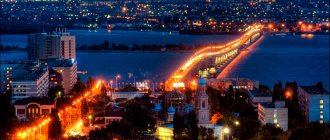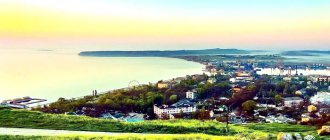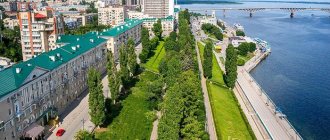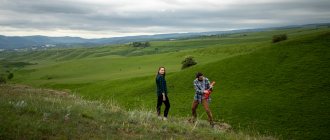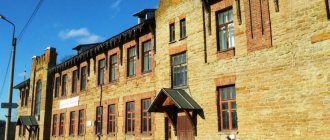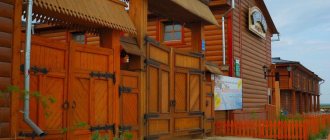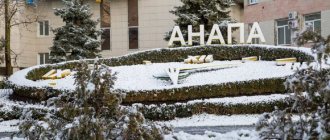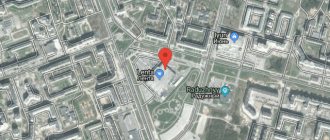Only the lazy have not written about castles and palace ensembles, churches, park complexes and natural attractions of the Grodno region. Of course, the “right” tourist will begin his acquaintance with the region by visiting these national treasures.
But if you are tired of serious art, ancient architecture and abstruse explanations of the guide, the Grodno region has something to surprise you. We bring to your attention places where you not only see the sights or visit museums, but also relax!
description
Grodno district, whose area is 2594.05 km2, is located in the west of the Grodno region.
It borders with Berestovitsky, Mostovsky and Shchuchinsky districts, as well as Poland and Lithuania. The relief of this region is diverse. Most of it belongs to the Neman Lowland, and in the west is the Grodno Upland. The highest point (247 m above sea level) is located near the village of Koptevka. The largest rivers are the Svisloch and Kotra. The Augustow Canal and Beloye Lake are also located in this area.
Grodno is the administrative center of the region. The town of Skidel and the urban settlement are also located here. Sopotskin. The territory of the Grodno region is divided into 13 rural and 1 city councils. As of 2022, its population was 49,803.
Grodno
Even without Grodno, this region is one of the richest in terms of cultural heritage. There is also a lot of untouched nature preserved here. If we add to this the visa-free regime and the position on the very border of the European Union, then there is every reason to expect that the Grodno region will become a popular tourist destination not only at the national, but also at the international level.
Museum of Prison Life
The most controversial, frightening and inaccessible museum in Grodno can safely be called the Museum of Prison Life, which is departmental and opened by “Prison No. 1” only two years ago.
If you manage to get on the excursion, be prepared to see a real checkered sky, instruments of torture, a model of the Grodno prison, a mannequin in a prison uniform, copies of prison cells from different eras, crafts made by prisoners, documents and a multimedia screen dedicated to the history of the prison, and much more. . Usually the excursion lasts about an hour, but you may not be able to see everything in one go.
The museum is located on Kirova Street, 6. You cannot get here “from the street”; you must sign up in advance, and excursions are only available for groups.
Eight reasons to visit the Grodno region
1. Raft along the Augustow Canal.
We are talking about a unique hydraulic structure, which became a real sensation in its time, allowing for the first time to connect the basins of the Baltic and Black Seas. However, over time, the transport importance of the Augustow Canal decreased, it fell into disrepair and began to recover only relatively recently. The Augustow Canal has been recognized as a UNESCO World Heritage Site.
Augustow CanalThese places are also famous for their natural beauty. The best way to get to know the Augustow Canal is to go through it on a kayak or other watercraft. Another good way is to visit the Nemnovo lock, which is the largest of all. There is a private museum dedicated to the history of the Augustow Canal, and there is also an active recreation camp “Nemnovo”, which includes a ring water route unique for Belarus.
2. Learn more about military history.
At the turn of the 19th and 20th centuries, a fortress began to be built around Grodno, which was to become one of the largest and most modern on the territory of the Russian Empire. Impressive reinforced concrete structures can still be seen today. Particularly impressive is the 4th fort, where, according to local historians, the personal bunker of Nicholas I was located.
Grodno FortressAfter the Grodno region became part of the USSR, construction of the so-called “Molotov Line” began. It was an equally large-scale fortification system, which has largely survived to this day.
3. Ride a bike to Europe.
Around Grodno, as well as in the vicinity of the Augustow Canal, there are tens of kilometers of cycling routes with all the infrastructure necessary for a full-fledged active recreation. In this regard, the Grodno region is far ahead of other Belarusian regions.
photo by S. KoledaAn additional attraction is the presence of a unique border crossing “Lesnaya-Rudavka”, which can only be crossed on foot, by bicycle or kayak if you have a visa or permission for visa-free entry into the European Union.
4. Find a vacation to your liking.
Not far from Grodno there is the Korobchitsy estate. This is an entertainment complex that includes a hotel, a restaurant with national cuisine, a cafe with an old interior, a stable, a park of wooden sculptures, and a whole zoo with exotic animals.
Here you can also see a reconstruction of a partisan camp and get acquainted with life during the Second World War. The Korobchitsy estate offers a lot of entertainment for every taste, so if you come here with your family, you will happily spend the whole day (perhaps even more than one).
5. Visit Odelsk.
The former town managed to preserve the cultural traditions of the Grodno region. Let's start with the fact that experts consider local dishes almost the standard of Belarusian cuisine. It is in Odelsk that you can try “real” heather. The Millers' Festival, which is known far beyond the region, also takes place here.
Church of the Ascension of the Virgin Mary in OdelskAn ancient wooden church with Baroque elements, which surprises with its impressive size, as well as a museum, add additional flavor to Odelsk. It contains wooden folk instruments made by local resident Marjan Skromblevich. His workshop is also located here.
6. Visit the Pysanka Museum.
In the Sopotska region, there has been a rich tradition of coloring Easter eggs, or pysanky, for a long time. For this, various natural raw materials are used. Local craftsmen have even developed a distinctive style that is easily recognizable.
www.sb.byIt is not surprising that it was in Sopotskin that it was decided to create the Pysanka Museum. Here you can not only see the best products of local craftsmen, but also learn how to make them yourself by becoming a participant in a master class. It is impossible not to mention the Easter egg Festival, which is held in April (as a rule, it is timed to coincide with Easter).
7. Feel like a tycoon.
In the village of Svyatsk there is a palace that belonged to the Volovichs. It was built at the end of the 18th century and, unlike many other noble residences that were located within the city, managed to survive to this day, avoiding destruction during the Second World War. Today, restoration work is underway inside.
Volovich Palace in SvyatskWhen they are completed, the complex in a transitional style from Baroque to Classicism, surrounded by a park and ponds, will appear in its former splendor. It is planned to house a restaurant, a hotel and much more inside. The uniqueness of the Holy Palace is also due to the fact that the interiors of the 18th century, created according to sketches by Giuseppe di Sacco, have been partially preserved inside it.
8. Go on a hike through the Grodno Forest.
In the north of the region there is a large forest area, which has long served as hunting grounds for grand dukes and magnates. Largely thanks to this circumstance, he managed to survive. In any case, these picturesque places are a real paradise for nature lovers, as well as extreme hikes.
A wetland covered with dense forest provides an excellent opportunity to test yourself. Of particular interest in this regard is the inaccessible Netecha tract. People rarely visit these places, so animals and birds feel like real masters here.
Lunno: traditional layout and houses of Jewish craftsmen
— This location is similar to Indura, but the places here are more picturesque. The traditional layout of the town has been preserved in the settlement: a large market square on which religious buildings are located, and streets extending from it like rays - such a radial layout.
The Church of St. Anne has been preserved in Lunno; it recently turned 300 years old. Very close by is a 19th century church. Interestingly, the houses where Jewish artisans lived have been preserved, and on many houses there are six-pointed stars left right on the facades.
The advantage of this location is that the place is located upstream of the Neman River, so you can combine sightseeing and relaxation on the so-called Grodno Sea. There are seagulls, yachts, catamarans - very beautiful.
Where is it located : the agricultural town of Lunno, Mostovsky district, Grodno region.
Found a typo? Select a piece of text with a typo and press Ctrl + Enter.
Story
Data from archaeological excavations indicate that people have been living in the Grodno region since Neolithic times. In the second half of the 1st millennium AD. The colonization of these places began by Slavic tribes who settled along the Neman and its tributaries. They partially displaced and partially assimilated the Balts.
In any case, at the turn of the 1st and 2nd millennium AD. the ethnic composition of these lands was quite diverse. It was then that Grodno was founded, although the first written mention of this city dates back to 1128. By that time, it was the political, cultural and economic center of the independent Grodno principality.
However, already in the 13th century it became part of the Grand Duchy of Lithuania. At the same time, Grodno became an outpost of the fight against the aggression of the crusaders, which ended after the Battle of Grunwald (the Grodno banner took part in it). In those days it was a thriving trading city, which received the Magdeburg Law in the 15th century.
This further contributed to the development of Grodno and the entire region. However, the wars that began in the middle of the 17th century significantly undermined its power. It was then that the city was completely destroyed by the troops of the Moscow state. The same fate befell many other settlements in the Grodno region.
However, she managed to recover. In the 18th century, Grodno actually turned into one of the capitals of the Polish-Lithuanian Commonwealth. Diets were held here and the royal residence was located here. However, after the third partition of the Polish-Lithuanian Commonwealth, which occurred in 1795, Grodno became part of the Russian Empire.
Since 1801, it has been the center of the province of the same name. The relatively peaceful 19th century contributed to the rapid development of the city, the first large industrial enterprises appeared here, and the population grew. The St. Petersburg-Warsaw Railway passed through Grodno (traffic along it began in 1862).
The First World War brought an end to the world. Already in 1915, the Grodno region was occupied by the Kaiser's troops. In April 1919 they were replaced by the Polish army. According to the Riga Peace Treaty, the Grodno region went to Poland.
Only in 1939 was it possible to unite it with the BSSR, and in January 1940 the creation of the Grodno region was announced. Collectivization soon began here, but the outbreak of the Great Patriotic War prevented its implementation. The occupation lasted three years, until July 1944. Immediately after this, restoration of the destroyed farms and houses began.
The post-war history of the Grodno region was accompanied by a number of administrative changes, as a result of which it acquired modern borders, and on July 19, 1994, Grodno was returned to its historical coat of arms - St. Hubert's deer jumping over the fence (it is from this that the name of the city came from).
The first zoo in Belarus
The oldest, and for a long time the only zoo in Belarus, is located next to the Grodno railway station, and therefore is often one of the first city attractions that tourists see. It has more than 3,000 thousand inhabitants, compactly located on the recently restored territory. It appeared in 1927, when a zoological department was opened in the botanical garden of the men's gymnasium. The founder is considered to be biology teacher Jan Kokhanovsky, and the first inhabitant is an ordinary beaver brought by a wounded man from Lunno.
In the first years, the number of species kept in the zoological garden grew to 30, and students from all city educational institutions in Grodno began to visit this place. Due to financial difficulties, since 1935, visiting has become paid.
During the Great Patriotic War, the zoo suffered greatly; valuable and rare specimens were taken to the Königsberg Zoo, and Kokhanovsky was shot. In the first post-war years, the zoo began to be restored, transporting it from place to place and replenishing the collection. Today there are such unique animals as the Sichuan takin, gray monitor lizard, Persian leopard, Amur tiger, and David's deer. The symbol of the Grodno Zoo is the bison (it is depicted on the zoo’s emblem).
The establishment is located at st. Timiryazeva, 11, open daily from 10:00 to 19:00, tickets for adults cost 5 rubles, for children over 3 years old - 3 rubles. For more information, please call +375.
THE SITE “PLANET BELARUS” HAS APPEARED A YANDEX ZEN CHANNEL. SUBSCRIBE!
What to see
The Grodno region has plenty of iconic sights in addition to the Augustow Canal and the Volovich Palace, which adorns Svyatsk. If the latter is still in the process of restoration and only promises to become a tourist pearl of the Grodno region, then the Tizengauz estate in Karolino has already found a second life. Unfortunately, the manor house has not survived. But guests of the agricultural estate located in this historical place can see a completely restored chapel, windmill, stables and other outbuildings.
Tyzengauz estate in Karolino
The estate in the village of Ponemun was once built for the last king of the Polish-Lithuanian Commonwealth, Stanislaw August Poniatowski. Unfortunately, today there is little reminder of its former greatness. The manor house itself (wooden, by the way) was rebuilt more than once until its appearance changed beyond recognition. So even the nearby stable looks much more impressive.
If you are interested in the culture of the gentry, then it is worth taking a look at the village of Svisloch, where the estate of the same name, which once belonged to the Krasinskis, is located. The Art Nouveau mansion has recently been completely restored, and the surrounding park is a wonderful place for walks at any time of the year.
The Grodno region is also rich in ancient churches. In the village of Adamovichi you can see the Church of the Assumption of the Virgin Mary, whose construction was completed in 1854. It is not distinguished by the richness of its external decor. Still, some characteristic features allow us to attribute this temple to late classicism, like the Church of the Heart of Jesus in Zanevichi.
Church of the Exaltation of the Cross in Golynka
The Church of Alexander Nevsky, also dating from the mid-19th century, is designed in the same style. Although, at first glance, these temples do not have much in common. In the Church of Alexander Nevsky, which adorns the village of Vertelishki, the main facade with a pediment supported by six columns, as well as a belfry with a helmet-shaped dome, stand out.
The Trinity Church in Indura, whose construction was completed in 1825, can easily be called a real masterpiece of late classicism. The basis of its decor is articulated pilasters, an entablature running along the entire perimeter of the main volume, and a majestic portico. At the beginning of the 19th century, this architectural ensemble acquired a modern look when towers with figured helmets were completed.
Trinity Church in Indura
Another impressive temple can be seen in Indura - the local synagogue, which was built in the mid-1880s. At that time, more than 80% of the local population were Jews. It is not surprising that the Indura Synagogue was built on a grand scale. However, its exterior decoration is not impressive. It is practically devoid of decorative elements. The ancient Jewish cemetery on the southwestern outskirts of the village is also noteworthy (the oldest burials with stone tombstones date back to the 18th century).
Synagogue in Indura
Church of St. Peter and Paul in Gozha was erected in the early 1860s. It is considered to be an example of the retrospective-Gothic style. The facade consists of two towers, between which there is a triangular shield. Round windows in the shape of loopholes give this temple the features of a castle architecture. An unusual effect is created by the combination of rubble stone with plaster.
The Church of the Exaltation of the Cross in Golynka is a rather rare case when a temple, originally built as an Orthodox church, eventually became a church. This happened in 1919, when the settlement became part of Poland. However, the appearance of the Holy Cross Church has undergone few changes. It is still defined by the features characteristic of the retrospective Russian style.
An interesting example of Art Nouveau is the Church of the Assumption of the Virgin Mary in Koptevka. The construction of this temple lasted from 1936 to 1939, when this village was still part of Poland. The ensemble also includes a chapel made of rubble stone. Koptevka is also decorated with the Assumption Church in a retrospective Russian style.
Church of the Assumption of the Virgin Mary in Koptevka
The Church of the Intercession, which can be seen in Milkovshchina, also belongs to the same direction in architecture. This temple is characterized by a five-domed composition, as well as an abundance of decorative elements (kokoshnikov, zakomar, etc.), which brings it closer to the traditions of ancient Russian architecture.
Church of the Intercession in Milkovshchina
In the 1930s, the Church of the Ascension of the Virgin Mary, which is located in Sopotskin, was renovated. This temple dates back to the end of the 18th century. That is why its appearance bears a pronounced Baroque influence, while the interior is designed more in the spirit of classicism, including a carved altar with columns and gilding. In Sopotskin it is also worth visiting the old Catholic cemetery, where many tombstones and chapels have been preserved.
In addition, the Annunciation Church in Perstuni, the Church of the Virgin Mary in Podlabenye, the Church of the Transfiguration of the Lord in Selivanovtsy, the Church of the Assumption of the Virgin Mary in Skidel, etc. deserve attention. They can literally serve as a visual aid to the history of architecture, since they embody the features of almost all styles.
The Grodno region is also a real treasury of wooden architecture. In the village of Zhitomlya, the Church of the Annunciation is still preserved, which, as is commonly believed, was built in the first half of the 18th century. It continues the tradition of folk architecture, which is characterized by modest exterior decoration.
Church of the Annunciation in Zhitoml
Just a few decades younger than the Church of the Immaculate Conception of the Blessed Virgin Mary, which is the main attraction of the village of Kashubintsy. Its construction was completed in 1773. Previously, this temple was part of a Jesuit monastery. In its appearance, the traditions of folk architecture are harmoniously combined with neo-Gothic elements.
In 1844, the Transfiguration Church was erected in Komotovo. It is also considered an example of folk architecture. However, during subsequent reconstructions, this temple acquired features of classicism and retrospective Russian style. In addition, wooden churches have been preserved in Lasha (Church of St. Nicholas), Novaya Ruda (Church of St. Yuri), Privalka (Church of St. Jude Thaddeus), Kozlovichi (Church of St. Andrew Boboli), Selyuki (Church of the Nativity of the Virgin).
The main attraction of Porechye is the railway station, built “before the Polish hour”. It is not impressive in size, but it looks very elegant thanks to the rich exterior decoration. It is based on the use of elements that are characteristic of neo-Baroque.
Geography lovers will certainly be interested in seeing the place that is recognized as the lowest point in Belarus. More precisely, there are two of them at once, and both are located near the village of Privalka. One is located before the border barrier, the other (it is a little lower) is immediately behind it.
Under heavenly intercession
Soon Zarechanka and Odelsk will be connected by the “Narajenne Bread” tourist route. For 530 years, the agricultural town, five kilometers from the Belarusian-Polish border, has been patronized by St. Anthony of Padua. It is he who meets travelers in the former market square, where traders once gathered for weekly fairs. When the Magdeburg Law was granted to the settlement in 1564, the town got its own coat of arms and seal with the image of St. Anthony (the emblem was restored six years ago). Every year on June 13, in honor of their patron, Odel residents organize a festival, which, together with the Millers' Day in November, is considered a brand of the agricultural town: two centuries ago there were several dozen windmills, a brick factory, and a wooden synagogue.
Odelsk is also famous for its masterpiece of wooden architecture of the 18th century with five carved wooden altars - the Church of the Assumption of the Blessed Virgin Mary. Here are the working organ, icons of the Ascension of the Blessed Virgin Mary and St. Anthony. Guests of the agricultural town are also invited to taste local cuisine, look into the museum rooms of wooden musical instruments of folk artist Maryan Skromblevich, whose work is included in the State List of Historical and Cultural Treasures of the Republic of Belarus, and embroidery and weaving master Natalya Kovalkova.
Celebrities
Lev Bakst
Lev Bakst was born in Grodno, who became famous as a master of easel painting and creator of theatrical scenery. In addition, Lev Bakst was a set designer. He painted portraits of many famous people of his time, but gained worldwide fame as the designer of scenery for performances of Diaghilev's Russian Ballet. It was in this area that he made a real revolution. In 1914, Lev Bakst was elected to the Academy of Arts.
Alexander Makovelsky
Alexander Makovelsky is also from Grodno. He graduated from the Faculty of History and Philosophy of Kazan University. For many years, Alexander Makovelsky taught at Baku University. The center of his scientific interests was pre-Socratic philosophy. For his achievements, Alexander Makovelsky was awarded the title of corresponding member of the USSR Academy of Sciences.
Iron Museum
The tiny but incredibly interesting Iron Museum is also popular among Belarusian and foreign tourists - the only one in the country. Perhaps this is a wonderful example of how an attraction is made from nothing. The collection of the museum, which opened a little over a year ago, contains more than 300 specimens and all of them can be touched, and some can be tried in action.
Coal and gas, cast iron and decorative, the size of a matchbox and huge multi-kilogram ones - all these are irons collected by enthusiasts in Belarus and abroad. By the way, in addition to a fun excursion, tourists will also find a kind of quest here - the opportunity to iron a linen tablecloth using a rolling pin and a ribbed board, following the example of our ancestors. The museum also has other kitchen utensils and a souvenir shop where you can buy something unusual as a gift to your friends.
The museum is located in Grodno on Sovetskaya Street, 7-23 (on the second floor, entrance from the courtyard), open from 10:00 to 18:00 on weekdays (except Mondays) and from 10:00 to 16:00 on weekends. Tickets for adults cost 4 rubles, for students - 3.5 rubles, for schoolchildren - 2.5 rubles, admission for preschoolers is free. You can sign up for a tour and get all additional information by calling 8 (029) 780-13-18.
Events
The most important events in the life of the Grodno region include the festival “Augustow Canal in the Culture of Three Nations”, the cycling marathon “Susedzi”, the sports festival “Swimming on Anything” and other events (their venue, traditionally, is the gateway of the Augustow Canal “Dombrovka”).
Mir Castle also hosts numerous cultural events. These include the Christmas ball, various concerts, etc. The festivals Mirum, Myastechka, Heritage of Centuries, and Mir-1812 are held here.
The most famous historical reconstructions also include the knightly tournament “Sword of Lida Castle”, and the rock festival “LidBeer”, held in this regional center every year, is popular not only in Belarus, but also in neighboring countries.
The ruins of the castle in Novogrudok serve as a natural backdrop for the Sword of the King festival and the Novogrudok Castle holiday. Oshmyany region is famous for its regional festival “Golshany Castle”, which is also dedicated to medieval culture.
The village of Okhonovo, located in the Dyatlovsky district, is known primarily for the fact that on May 5 you can see the “Yurye” ritual, which is included in the UNESCO List of Intangible Cultural Heritage. The ancient traditions are continued by the “Gannensky Kirmash”, which Zelva has been hosting for many centuries.
A large number of pilgrims are traditionally attracted by the Trinity Fest, which is celebrated in mid-July in Gervyaty on the territory of the local church, as well as the Zhirovichi Fest (its organizer is a monastery located in the village of the same name).

